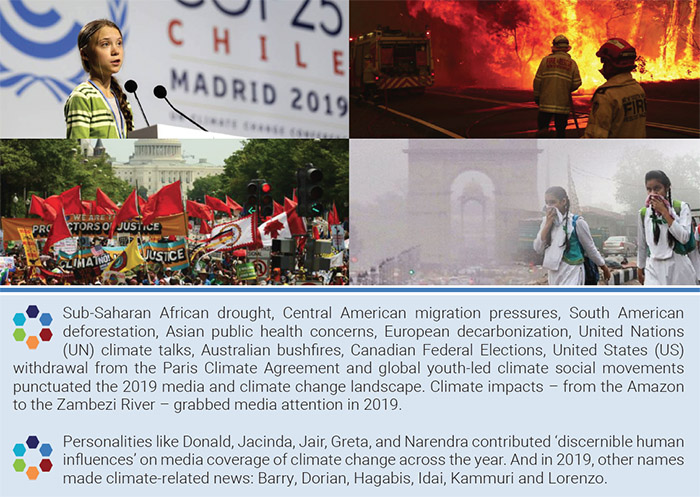How Trump’s anti-immigrant policies could collapse the US food industry – visualized – The Guardian

Report on the Impact of U.S. Immigration Policy on the Food Sector and Sustainable Development Goals
Introduction: A Challenge to Sustainable Development
Recent immigration enforcement actions within the United States are creating significant disruptions to the national food supply chain. These developments pose a direct challenge to the achievement of several key United Nations Sustainable Development Goals (SDGs), particularly those concerning hunger, economic stability, and social equity. This report analyzes the cascading effects of these policies, from primary agricultural production to final consumption, through the lens of the SDGs.
Threats to Food Security and Sustainable Agriculture (SDG 2: Zero Hunger)
The stability of the U.S. food system is intrinsically linked to its immigrant workforce. Current policies are undermining this stability, threatening progress toward SDG 2, which aims to end hunger, achieve food security, improve nutrition, and promote sustainable agriculture.
Labor Shortages and Production Gaps
Reports from agricultural regions, such as Texas, indicate that farm workers are avoiding employment due to fear of raids by Immigration and Customs Enforcement (ICE). This has led to critical labor shortages for planting and harvesting, jeopardizing crop yields. A potential decline in the quantity of harvested produce directly threatens food availability and risks undermining national food security.
Disruptions Across the Value Chain
The impact extends beyond the farm to the entire food value chain. Restaurants and food service establishments, particularly in cities like Los Angeles, have been forced to close due to staff shortages. A systemic disruption caused by mass deportations could lead to:
- Crops spoiling in fields due to a lack of harvesters.
- Unstocked supermarket shelves.
- Significant increases in food prices, making nutritious food less accessible for low-income households and hindering progress on SDG 2 targets.
Implications for Decent Work and Economic Growth (SDG 8: Decent Work and Economic Growth)
The food industry’s reliance on immigrant labor, combined with the precarious conditions these workers face, highlights significant challenges to achieving SDG 8, which promotes inclusive and sustainable economic growth, full and productive employment, and decent work for all.
Composition of the Food Industry Workforce
Immigrant labor is a cornerstone of the U.S. food economy. Data from the Migration Policy Institute and other sources reveal a heavy reliance on this demographic:
- Approximately one in five jobs in the food industry is held by an immigrant.
- Immigrants comprise 27% of all agricultural workers.
- The meatpacking industry is staffed by 33% immigrant workers.
- In restaurants, 46% of chefs and 31% of cooks are foreign-born.
Failure to Ensure Decent and Safe Work
Many of these essential roles are characterized by low wages, physically demanding labor, and unsafe conditions, which runs contrary to the principles of “decent work” outlined in SDG 8. The current climate of fear exacerbates these issues:
- Workers face the constant threat of raids and deportation, creating an environment of extreme psychological distress.
- The death of a farm worker in California while attempting to flee an ICE raid underscores the life-threatening dangers now associated with this essential labor.
- Such conditions undermine the goal of providing safe and secure working environments for all workers, regardless of their origin.
Erosion of Social Equity and Community Stability (SDG 10 & SDG 11)
The targeting of immigrant workers deepens societal divisions and threatens the fabric of local communities, directly conflicting with goals for reducing inequality and building sustainable communities.
Deepening Inequality (SDG 10: Reduced Inequalities)
Immigration enforcement policies disproportionately affect a vulnerable population that performs essential services. While these workers were critical to maintaining the food supply during the COVID-19 pandemic, they are now subjected to policies that deny them basic security. This dynamic widens the gap between different societal groups and contravenes the core principle of SDG 10 to reduce inequality within and among countries.
Destabilizing Sustainable Communities (SDG 11: Sustainable Cities and Communities)
The potential deportation of millions of undocumented immigrants threatens to dismantle the social and economic structures of numerous communities, particularly in rural areas. These workers and their families are integrated into local economies; they pay taxes, support local businesses, and enroll their children in local schools. Removing them would not only create an economic vacuum but also lead to the “destruction of families and vibrant communities,” undermining the objective of SDG 11 to make human settlements inclusive, safe, resilient, and sustainable.
Analysis of Sustainable Development Goals (SDGs) in the Article
1. Which SDGs are addressed or connected to the issues highlighted in the article?
-
SDG 2: Zero Hunger
- The article directly connects the treatment of immigrant workers to food security. It warns that labor shortages due to fear and deportation could lead to “quantities of produce are depleted,” “crops left to spoil in the fields,” and “supermarket shelves unstocked.” This directly impacts the availability and accessibility of food for the general population.
-
SDG 8: Decent Work and Economic Growth
- The article extensively discusses the working conditions of immigrants in the food industry. It highlights issues of low pay (“as little as $7.25 per hour”), difficult and dangerous labor (“backbreaking work with no shade,” “slaughter, eviscerate and package at high speeds”), and the precarious nature of their employment. It also touches on the economic contribution of these workers, noting their role is “critical” and that their absence could “upend rural economies.”
-
SDG 10: Reduced Inequalities
- The core issue is the vulnerability and unequal treatment of a specific group: undocumented immigrants. The article describes how this group faces “an assault,” fear of raids, and the threat of deportation, making them a marginalized population. It points out that they fill a disproportionate number of “essential” yet undesirable jobs, highlighting a systemic inequality.
-
SDG 11: Sustainable Cities and Communities
- The article mentions that mass deportations could “upend rural economies that depend on migrant workers and their families who live, work and go to school in small declining communities.” This links the stability and sustainability of these communities directly to the presence and well-being of the immigrant population.
-
SDG 16: Peace, Justice and Strong Institutions
- The article describes a climate of fear and violence created by institutional actions. It mentions “raids by Immigration and Customs Enforcement (Ice),” the death of a worker “trying to escape armed Ice agents,” and the general fear that causes workers to “go into fight or flight mode.” This points to a failure to ensure safety, justice, and peaceful existence for this segment of the population.
2. What specific targets under those SDGs can be identified based on the article’s content?
-
Target 2.1: By 2030, end hunger and ensure access by all people… to safe, nutritious and sufficient food all year round.
- The article’s warnings about potential food supply disruptions (“shelves can sit empty,” “food prices soaring even higher”) directly relate to ensuring access to sufficient food. A stable food supply is threatened by the labor instability described.
-
Target 8.5: By 2030, achieve full and productive employment and decent work for all… and equal pay for work of equal value.
- The article illustrates the lack of decent work through descriptions of low wages (“$7.25 per hour”) and “backbreaking work,” which are contrary to the goal of decent work for all.
-
Target 8.8: Protect labour rights and promote safe and secure working environments for all workers, including migrant workers… and those in precarious employment.
- The article highlights the unsafe environment for migrant workers, citing the death of Jaime Alanís during an ICE raid and the general fear that makes their jobs “even more dangerous.” This directly contradicts the goal of a safe and secure working environment.
-
Target 10.7: Facilitate orderly, safe, regular and responsible migration and mobility of people, including through the implementation of planned and well-managed migration policies.
- The article describes the opposite of this target. The “assault on immigrants,” “terrifying Ice raids which are spreading and becoming more violent,” and the threat of “mass deportation” represent a migration policy that is not orderly, safe, or well-managed.
-
Target 16.1: Significantly reduce all forms of violence and related death rates everywhere.
- The death of a farm worker who fell “trying to escape armed Ice agents” is a direct example of a death related to violence and the use of force by state institutions, which this target aims to reduce.
3. Are there any indicators mentioned or implied in the article that can be used to measure progress towards the identified targets?
-
Wage levels for food industry workers
- The article explicitly mentions the federal minimum wage of “$7.25 per hour” as a pay rate for these difficult jobs. This figure can be used as a direct indicator to measure progress towards Target 8.5 (decent work and equal pay).
-
Proportion of immigrants in the workforce
- The article provides specific data points: “one in five jobs in the food industry is carried out by immigrants,” “27% of agricultural workers,” and “33% of meatpackers.” These percentages are indicators of the reliance on immigrant labor and can be tracked to understand workforce dynamics.
-
Number of deportations and enforcement actions
- The article mentions the “promised mass deportation of 11 million undocumented immigrants” and frequent “raids by Immigration and Customs Enforcement (Ice).” The number of raids and deportations serves as an indicator for Target 10.7, measuring whether migration policies are becoming more or less safe and orderly.
-
Food prices and availability
- The article implies that “grocery prices could rise” and “shelves can sit empty.” These are measurable outcomes that can serve as indicators for Target 2.1, reflecting the stability of the food supply and access to food.
-
Incidents of violence and death related to immigration enforcement
- The specific mention of the death of Jaime Alanís during an ICE raid is a qualitative indicator. A quantitative indicator would be the number of injuries or deaths associated with such enforcement actions, which is relevant to measuring progress on Target 16.1.
4. Table of SDGs, Targets, and Indicators
| SDGs | Targets | Indicators |
|---|---|---|
| SDG 2: Zero Hunger | 2.1: Ensure access to safe, nutritious and sufficient food. |
|
| SDG 8: Decent Work and Economic Growth |
8.5: Achieve full and productive employment and decent work for all.
8.8: Protect labour rights and promote safe and secure working environments for all workers, including migrant workers. |
|
| SDG 10: Reduced Inequalities | 10.7: Facilitate orderly, safe, regular and responsible migration and mobility of people. |
|
| SDG 11: Sustainable Cities and Communities | 11.a: Support positive economic, social and environmental links between urban, peri-urban and rural areas. |
|
| SDG 16: Peace, Justice and Strong Institutions | 16.1: Significantly reduce all forms of violence and related death rates everywhere. |
|
Source: theguardian.com

What is Your Reaction?
 Like
0
Like
0
 Dislike
0
Dislike
0
 Love
0
Love
0
 Funny
0
Funny
0
 Angry
0
Angry
0
 Sad
0
Sad
0
 Wow
0
Wow
0


































































:quality(70):focal(289x270:299x280)/cloudfront-us-east-1.images.arcpublishing.com/shawmedia/H7NH74ZRH5CNJBTEBSN7OYFHL4.jpg?#)








